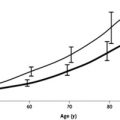
This issue of Hematology/Oncology Clinics of North America provides cutting-edge information spanning from the bench to the bedside, focusing on current and future clinical advances. Dr Kyle and colleagues, who first described monoclonal gammopathy of undetermined significance and smoldering multiple myeloma, provide new information on mechanisms underlying their evolution to active myeloma as well as treatment protocols to delay or prevent this progression. Dr van de Donk describes current science-based understanding of diagnosis and risk stratification in myeloma, which continues to evolve as our understanding of the genetic complexity of this disease increases. Dr Landau updates management of the newly diagnosed patient with myeloma who is a transplant candidate, and Dr Moreau describes similar advances in the initial management of nontransplant candidates. Dr McCarthy then provides a synthesis of current data on the duration and benefits versus risks of maintenance therapies in transplant recipients as well as elderly nontransplant patients. Despite this progress, myeloma commonly relapses, and Dr Gentili provides information on currently available therapies for relapsed and refractory myeloma. In this context, Dr Bensinger describes the benefits of graft versus myeloma affect versus risk of attendant graft versus host disease associated with allografting in myeloma. Dr Varga and coworkers then describe promising novel therapies in clinical trials at present, new generation immunomodulatory drugs and proteasome inhibitors as well as new targeted therapies, which are highly likely to improve patient outcome even further. Dr Bae then summarizes the advances in immune-based therapies, including monoclonal antibodies, vaccines, and checkpoint inhibitors, which have already translated to clinical evaluation in myeloma. Finally, Dr Treon and colleagues describe their seminal finding of MyD88 mutations in a majority of Waldenström macroglobulinemia as well as its important implications for biomarkers and targeted therapy.
Although the last decade has seen amazing progress with a doubling to tripling of patient survival in myeloma, novel agents and immune approaches offer the hope and promise of long-term disease-free survival. This progress has required the selfless commitment of basic and clinical researchers, biotechnology and pharmaceuticals, regulators, National Cancer Institute and Foundation funding, and most importantly, the active participation of patients in clinical trials evaluating new paradigms of therapy. Remarkably, myeloma is already a chronic illness in many patients, and curative potential now a realistic goal.
Stay updated, free articles. Join our Telegram channel

Full access? Get Clinical Tree




